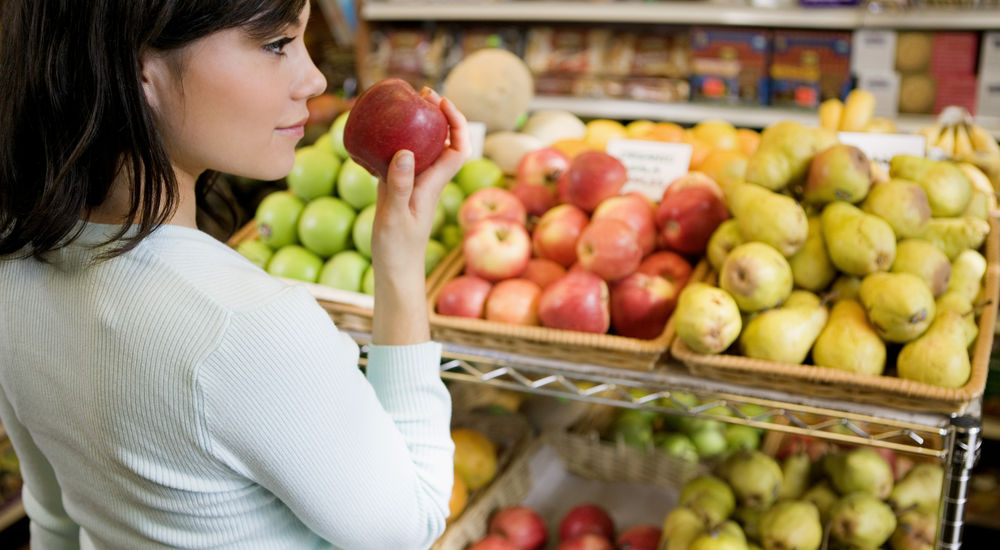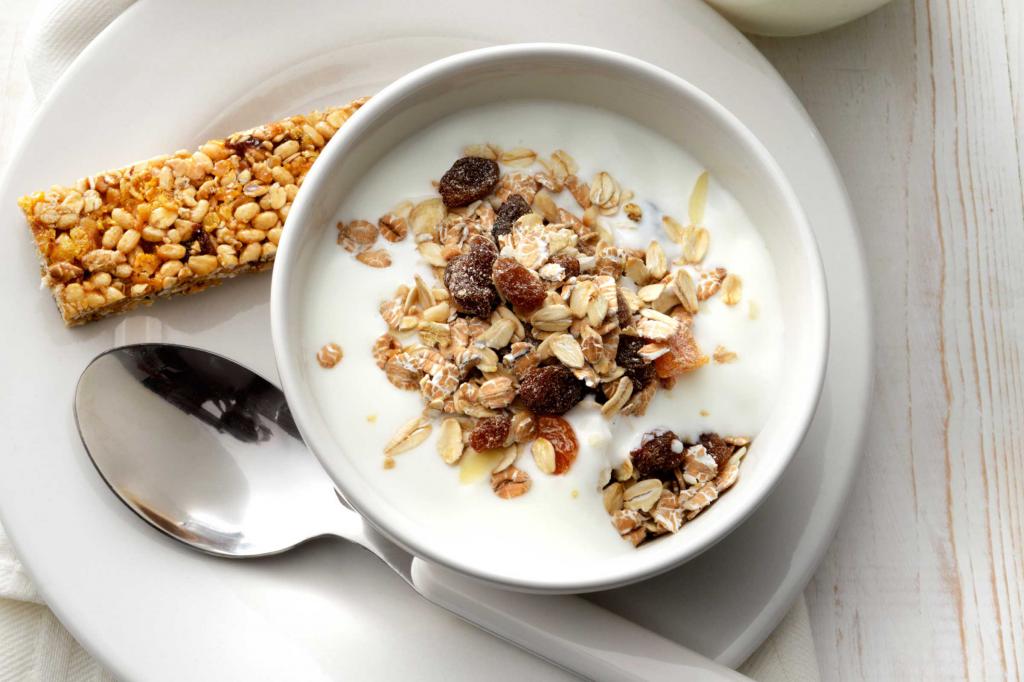At a young age and with a healthy body, few people ask about the rationalization of their nutrition and the imposition of restrictions on harmful foods that differ favorably in taste from healthy ones. People begin to set themselves the task of eating right every day and, most importantly, to maintain their once-taken positions when they discover that they have formed health problems. Avoid this and prevent pathologies associated with a violation of food culture is very simple. But you need to start working on yourself right now, by studying tips on how to eat right.
Standard Power Mistakes
Sooner or later, human health begins to mirror his taste preferences. It is enough for an experienced nutritionist to take a look at the client who came to him for help to determine the type of food trap in which he was unhappy. There are 5 of them, and all of them are social stereotypes, to destroy which means to free yourself for a healthy lifestyle.
These are the "traps":
- “Squeezing” the entire daily diet into the framework of three meals;
- Incorrect calorie calculation
- irrational consumption and replenishment of energy;
- refusal of dinner or a “six-hour barrier”;
- refusal of fats in the diet.
And one more piece of advice for those who want to learn how to eat properly and without harming their health - you should not focus on the same set of products throughout the entire annual cycle. What is good for the body in winter (cereals, boiled vegetables, “winter” citrus fruits) will be too difficult in the summer, when seasonal fruits and raw vegetables are more relevant. Seafood, lean meat, greens are useful in all seasons.

Calorie Calculation and RBC Index
How to start eating right? First of all, this is possible only if the diet is balanced. Calculating the number of energy units, receiving which the body will feel comfortable, is simple - you need to multiply your body weight by 45. The resulting number will be the absolute norm for a particular person, and attempts to reduce it will lead to the body starting to consume itself. Accordingly, excess calories will go to the fat layer.
The optimal coefficient of flask required daily for the body is approximately 55-65 g of fat, 240-260 g of carbohydrates, 70-80 g of protein. If a person is actively involved in sports, the amount of necessary substances needs to be increased. And, on the contrary, it is better for an individual leading a sedentary lifestyle not to exceed normative values.
How many times a day you need to eat
How to eat? Since the amount of food eaten at a time should conditionally fit in the palms collected "in the boat", approaches to the table with a competent distribution of food cannot be less than four during the day. Keeping a 3-4-hour interval between meals is the second important condition of this rule.
An evening meal is very important, because the ability of the body to correctly distribute the substances consumed during the day depends on it. Traditionally, dinner accounts for 70% of the total daily protein intake and 20% of the total amount of food.
You can’t refuse dinner, or reschedule it for a time more appropriate for an afternoon snack, because by the evening the body will get hungry and begin to secrete a large amount of gastric juice. The so-called six-hour barrier, when people, after 6 pm, completely deny themselves food - a common cause of gastritis and peptic ulcer. The best time for dinner is three hours before bedtime (but no later than 9 pm).

A few words about fats - friends or enemies?
If fats did not have an unpleasant property to be absorbed almost instantly by adipocytes - cells that form fatty fractions, their use in dietary nutrition would exceed the importance of proteins and carbohydrates several times. The body has to spend almost 10 kcal to oxidize only 1 g of fat, and this process does not stop even for a minute.
The ability of fats to rapidly accumulate in the subcutaneous tissues and the associated inconvenience caused myths about the dangers of the substance as a whole. Indeed, fats with saturated acids are mostly represented by products that can cause obesity and disruption of the heart muscle. These are: butter and various cheeses, chocolate, yeast baked goods and semi-finished meat products. You need to consume these products to a minimum, but only thanks to lipid compounds from this group the body receives vitamins A, E, K.
There are other fats - with unsaturated acids that enter the body from healthy vegetable oils: olive, sunflower, pumpkin, and corn. To exclude them from the diet means to deplete your diet on such important components as omega acids, which resist the development of tumors and are responsible for the body's immune defense.
The third type is trans fats and this is the only type of lipid compounds that you need to keep away from your table. Hydrogenated masses are added to confectionery, fast food products, margarines and mayonnaise sauces.

Essential components of a healthy menu
How to start eating right? All products from the list below should participate in the human diet, regardless of the time of year or dietary beliefs. If for some reason, for example, because of an allergy or for vegetarian reasons, an individual excludes several types of products from the list, they should be replaced by ones that are similar in terms of benefit and energy value. For example, meat is well replaced by walnuts, and dairy derivatives of animal origin are replaced by soy, almond or rice milk.
Products that must be present on the menu:
- friable cereals: buckwheat, rice, wheat;
- viscous cereals: hercules, barley, corn;
- vegetables: all kinds of cabbage, tomatoes, carrots, beets, turnips, radishes;
- beans: soybeans, beans (green and dry), lentils;
- nuts: cashews, almonds, walnuts;
- dairy products: fresh milk (natural), yogurt, kefir, cottage cheese, homemade yogurt on live bacteria;
- sea fish and seafood;
- lean meat: veal, rabbit, white poultry;
- fruits and berries - according to season.
Drinks such as tea or coffee can also be useful if you drink them no more than a cup a day and give preference to natural rather than waste products.

Silent body killers
When switching to proper nutrition, you will have to abandon food that is incompatible with the concept of healthy food once and for all. It can be much more difficult to do than to introduce healthy food into the diet, since most of the potentially dangerous foods include taste enhancers that initiate addiction. Weaning from harmful food elements should always be done so as not to cause stress in the body.
It is best to discard unnecessary products in the order in which they are listed:
- sweet soda - this includes pseudo useful mineral water with fruit flavors;
- energy and cheap alcohol;
- foods cooked in large volumes of fat;
- all kinds of fast food;
- various creamy and pseudo-cream sauces such as mayonnaise;
- lunch boxes - all these quick-swelling mashed potatoes and noodles in bright packaging;
- sausage and sausage products;
- processed and other cheeses, which indicate that they are a “cheese product”;
- confectionery (exception - cooked home from high quality products;
- juices in tetra-pack.
A separate line in the recommendations on how to eat properly will be a conversation about chocolate. Everyone's favorite treat is very useful, especially in the mornings, but the sweet that is sold in supermarkets rarely matches the high purpose of cocoa beans. It should be remembered that the content of cocoa powder in good chocolate cannot be less than 55%.
How to eat a woman
Unlike the male, the female body goes through stages associated with the maximum concentration of physiological metamorphoses - this is hormonal age-related preparation for pregnancy, gestation, childbirth, feeding, as well as menopause. Conventionally, this divides the woman's life into several periods, each of which requires special support from the diet:
- 20-30 years - a period of enhanced metabolic processes and general preparation for motherhood. The required diet is a large number of vegetables, all dairy and cereal products, fruits by season.
- 30-40 years - metabolic processes slow down, the first signs of aging appear. For better functioning of the body, products containing healthy starches - potatoes, rice, corn, beans, and fermented milk products are added to the previous list. Sausages, smoked meats and canned food are completely excluded.
After 40 years of age, the female body begins to prepare for irreversible climacteric changes. The required menu is a food rich in antioxidants and vitamins E, B, F. Animal fats are minimized, but vegetable must appear in all its diversity, especially unrefined vegetable oils.

How to eat a man
If a woman is allowed to limit herself in the consumption of animal protein, a man is not allowed to refuse meat, because maintaining muscle mass in optimal condition requires a lot of building protein substances. Of course, this does not apply to sausages, as well as semi-finished products containing meat in small quantities. It is better to gradually displace pork from the diet with veal, rabbit meat, white meat. Particular attention is paid to offal - beef liver and heart.
How to eat properly and without prejudice to the figure? From dairy products, a man is more suitable for cottage cheese of medium fat content and sour milk, but not more than three times a week. But what is better not to limit oneself, is in boiled or steamed sea fish with herbs and spices. It can be prepared in separate dishes or added to green salads.
Lovers of confectionery sweets among men are enough, but few know that sugar for representatives of the stronger half is a much greater danger than for women. The fact is that the heart and blood vessels of men do not have such hormonal support from the body as the opposite sex, and it is more difficult for them to cope with the load that sugar exerts on the hematopoietic system. Hence, such sad statistics of strokes in men after the age of 45 years.

The ideal menu for a healthy person
How to eat at home? The task of food consumed during the day is not satiety of the stomach, as most people think, but timely replenishment of the current resources of the body. In the morning, a person must create an energy potential for movement, therefore, the basis of the first meal should be carbohydrates. By the middle of the day, the working state of the digestive system will already allow the proper distribution of fats, but evening food should be more than half protein, since it is protein that will be responsible for the nightly processes of food assimilation in the body.
Breakfast is an exception time. Even dieters can afford a forbidden treat - pancakes with fruit or curd filling, chocolate, pasta, croutons. One can’t even talk about the benefits of various cereals, but the general principle of breakfast is the absence of most of the prohibitions on diet food (if we are not talking about serious diseases).
Be sure to have a snack between breakfast and lunch, the purpose of which is to prevent overeating during lunch. As a second breakfast, usually unsweetened crackers, bananas, citrus fruits. Vegetable salad and a glass of natural juice are perfect.
Lunch is the densest food “load”, but not by the volume of the plate, but by the number of calories consumed. The Soviet standard of three dishes, which corresponded to all the dinners on the territory of our country, is the most striking indicator of how to eat right. The menu must certainly include: the first hot dish cooked in meat or saturated vegetable broth, then the second hot dish consisting of a side dish, a piece of meat (fish) and salad, and, finally, a warm drink (tea, compote, jelly) .
The feeling of satiety after dinner should not be confused with a feeling of heaviness. A feeling of drowsiness or unwillingness to move after dinner is a clear sign of overeating, so you need to adjust the portion sizes so that after eating there is a slight desire to “intercept” something else. In half an hour, when all the food goes down the esophagus, this desire will pass.
An afternoon snack should be no earlier than three hours after lunch and may already include a small amount of protein and enough dietary fiber. An ideal afternoon snack is a fruit salad seasoned with yogurt, or a glass of kefir with a slice of cottage cheese casserole. Nuts, boiled vegetables, grapes, apples, a banana are well digested late in the evening.
Despite the model of eating behavior accepted in the modern world, when the fattest and most dense foods are saved for dinner, the preparation of which takes a lot of time and effort, the human body is set up for completely different rhythms. He has already received the carbohydrates and fats required for normal work and needs only elements capable of ordering everything received in a day and formulating a qualitative formula from the finished composition for building the cell structure.
How to eat 3 hours before bedtime? Ideally, if there is an air omelet on the table with a side dish of boiled or stewed (without butter) vegetables, boiled beans, chickpeas or soy, with a small piece of fish stewed in its own juice. There are many options for a tasty and light dinner, and the main prohibitions on the last meal are familiar to those who lead a healthy lifestyle. These are sweets, fried and fatty foods, smoked meats, pickles, canned food.

How to eat with diabetes
In case of a disease of the first or second type, it is important to learn how to correctly calculate the body's need for energy units so that excess calories do not “feed” the pathology, but there is also no deficiency in them. The calculation is based on body weight and lifestyle associated with the consumption of kilocalories.
The main danger threshold for a diabetic is the presence in his diet of processed carbohydrates, a simple example of which is sugar - in its pure form or existing by default in the product. Therefore, a diabetic patient should exclude from the menu all types of confectionery sweets, fresh pastries, marinades, soda water and fruits such as grapes, bananas, melons, pears.
The complex carbohydrates available in the finished product - pasta, some cereals, bread - are also not within the strength of a weakened diabetic organism, but the same carbohydrates, but in vegetables (carrots, turnips, beets), can be eaten almost freely, limiting their volume 300 grams per day. Vegetables depleted in carbohydrate compounds - greens, all kinds of cabbage, cucumbers, tomatoes - form the basis of the nutritional diversity of the diabetic. Mushrooms are allowed here - no more than 130 g, and potatoes - up to 250 g.
Regardless of how a sick person eats with diabetes - correctly or with impairments, he will periodically encounter manifestations of dysbiosis. Nutritionists recommend during these periods to limit as much as possible the use of thermally processed foods and “bring down” fresh vegetables, herbs and tops of carrots, beets, and root parsley.